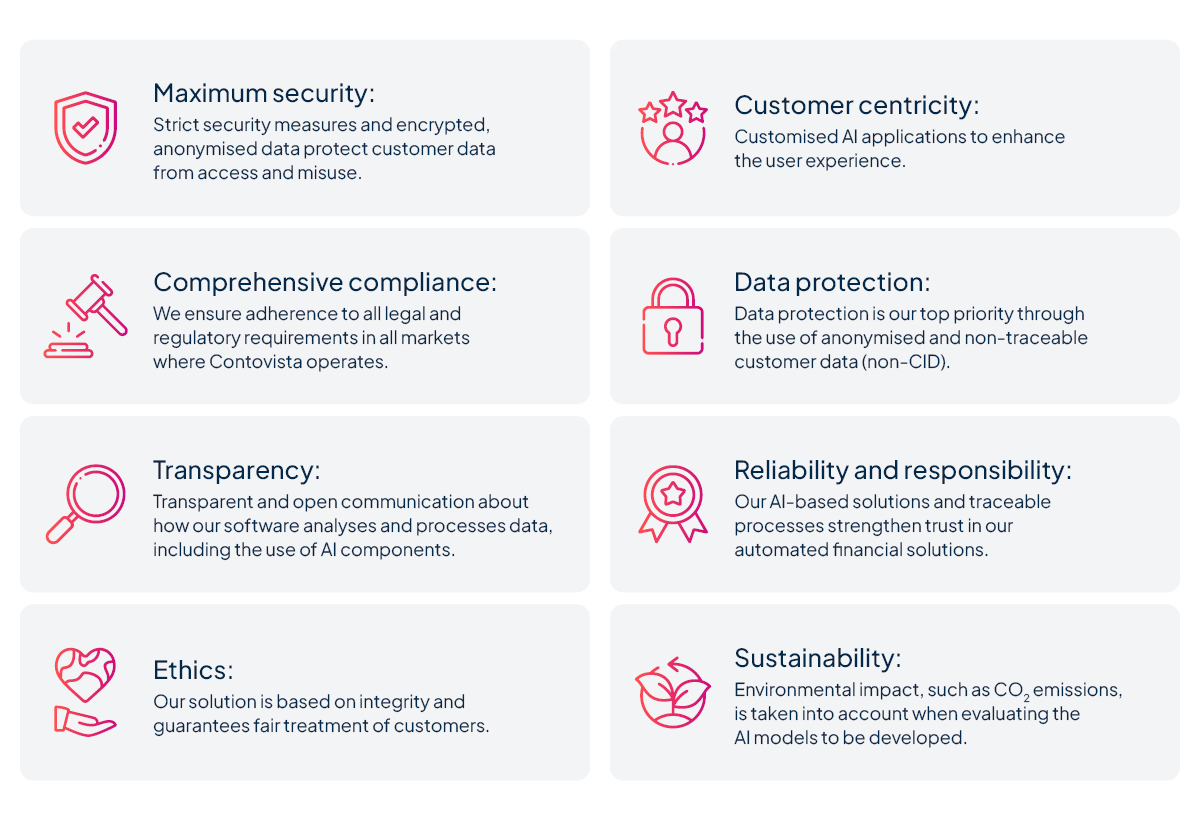The term “artificial intelligence” covers a broad spectrum. As experts at Contovista, what do you understand by this and what are the benefits?
Ilario: At Contovista, we understand AI as the ability of machines and software to perform tasks that usually require human intelligence. This includes learning from data, pattern recognition, understanding natural language, and decision-making. For example, we use AI to accurately identify merchants and categories based on transaction data. We then transform this data into meaningful, data-driven insights for end customers, allowing them to have better oversight and control over their finances. Banks have access to around 15 analytics features through our five AI-based client analytics modules.
Martin: In the context of AI, it’s important to also speak about machine learning, which is a subset of AI that has been used for a long time. While machine learning has proven effective in pattern recognition within datasets, approaches such as generative artificial intelligence (GenAI) provide context-sensitive results even in areas where they have not been specifically trained. In addition, we need to distinguish this from general artificial intelligence (GAI), which is still a thing of the future.
ML approaches sometimes suffer from issues like the generalisation gap, where a model fails to generalise. Other common weaknesses include overfitting (over-adapting to training data), bias (prejudices in the training data), and data quality problems. Machine learning has made impressive strides and enabled many practical applications, but an innovative use of AI can achieve entirely different results in terms of contextualisation and flexibility.


